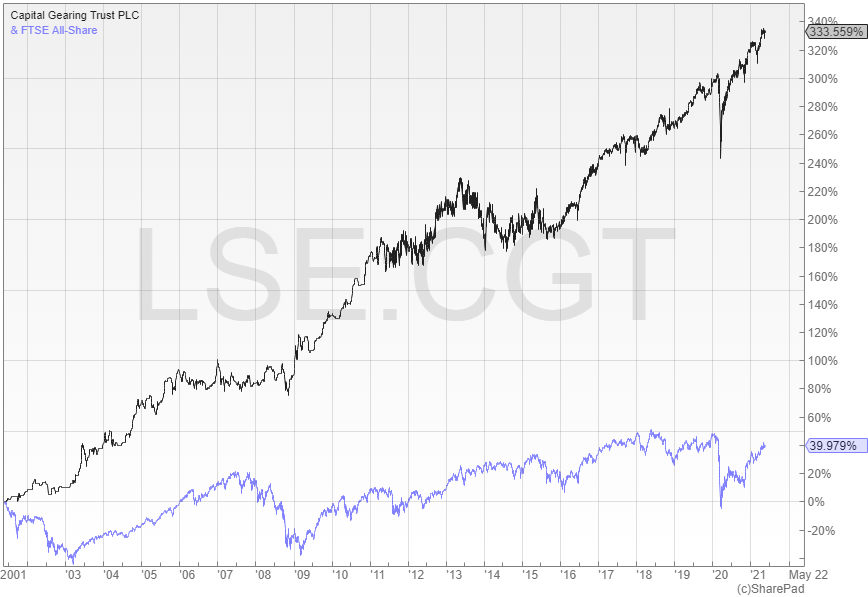Another solid year for the Capital Gearing Trust

The best all-weather portfolios are built around dependable core holdings and there are few better than the Capital Gearing Trust (LON:CGT).
Capital Gearing aims to preserve shareholders’ real wealth and to achieve an absolute total return over the medium to longer term. In its latest accounts to 5 April, the shares were up 13.6% and since January 2000 it has achieved an impressive annualised return of 8.3% with a maximum peak to trough decline of nine percent. Over the same period, the equity-only MSCI UK index rose by an average of just 3.7% per annum with a biggest fall of 41.3%.
The managers have put together a defensive portfolio that at the end of April consisted of investment trusts and equities (46%), index-linked government bonds (30%), conventional government bonds (9%), preference shares and corporate debt (8%), cash (5%) and gold (2%).
During the reporting period the most significant change in the asset allocation was the increase in investment trusts and equities from 36% to 46% and it is now the highest it has been since 1992. Many of the new purchases were made at the height of the pandemic using the cash that the fund held going into the sell-off.
Balanced approach pays off
The main area of additions were specialist property investment trusts that now make up 22% of the portfolio. These have performed strongly since being acquired yet are still thought to be attractively valued.
Examples include student residential property through GCP Student Living (LON:DIGS) and Empiric Student Property (LON:ESP); Tritax Big Box (LON:BBOX) and Secure Income REIT (LON:SIR), both of which benefit from long-term inflation protected leases; and German residential property companies like Phoenix Spree Deutschland (LON:PSDL), which have profited from a court decision overturning a rent freeze ruling.
As you would expect, the best returns came from the conventional equity holdings that make up a further fifth of the portfolio, whereas the index-linked bonds lost 6.5% of their value, mainly due to the strengthening pound. These linkers play an important role stabilising the portfolio volatility through their negative correlation to the stock market.
Prudently positioned
The other significant section of the portfolio represents the ‘dry powder’ assets and consists of cash and treasury bills, as well as short dated credit and preference shares. These liquid holdings constitute a fifth of the allocation and can be deployed when better opportunities emerge in the future.
Lead manager Peter Spiller says that over the last decade the primary objectives of central banks have migrated from inflation targeting to social and environmental goals. These are best advanced by monetising government deficit spending, which leaves resurgent inflation as the most likely mechanism by which conventional bond and equity markets will be simultaneously undermined.
The defensively-oriented portfolio with its mixture of inflation-protected bonds, diversified value-biased equities and cash/equivalents represents a sensible and prudent combination. It would make an excellent core holding regardless of what happens to the broader markets.

Comments (0)